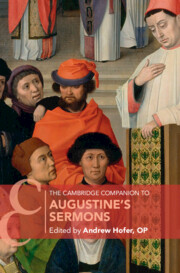Refine search
Actions for selected content:
121 results

Learning to Teach in a New Era
-
- Published online:
- 04 October 2025
- Print publication:
- 25 September 2025
-
- Textbook
- Export citation
1 - Introduction
-
- Book:
- The Nature and Limitations of Conscience in Healthcare
- Published online:
- 12 September 2025
- Print publication:
- 02 October 2025, pp 1-14
-
- Chapter
- Export citation
Introduction
-
- Journal:
- New Blackfriars ,
- Published online by Cambridge University Press:
- 29 September 2025, p. 1
-
- Article
- Export citation
Chapter 1 - Teaching in current times
- from Part I - Preparing to teach
-
-
- Book:
- Learning to Teach in a New Era
- Published online:
- 04 October 2025
- Print publication:
- 25 September 2025, pp 10-38
-
- Chapter
- Export citation
Introduction
-
- Book:
- Learning to Teach in a New Era
- Published online:
- 04 October 2025
- Print publication:
- 25 September 2025, pp 1-8
-
- Chapter
- Export citation
Chapter 1 - Introduction
-
- Book:
- The Neural Structure of Consciousness
- Published online:
- 27 July 2025
- Print publication:
- 18 September 2025, pp 1-34
-
- Chapter
- Export citation
1 - Introduction
-
- Book:
- Appearance, Disability and the Law
- Published online:
- 31 July 2025
- Print publication:
- 14 August 2025, pp 1-9
-
- Chapter
- Export citation
Introduction
-
-
- Book:
- The Cambridge Companion to Augustine's Sermons
- Published online:
- 26 May 2025
- Print publication:
- 12 June 2025, pp 1-22
-
- Chapter
- Export citation
Introduction
-
- Book:
- Language and Literacy
- Published online:
- 29 May 2025
- Print publication:
- 12 June 2025, pp 1-6
-
- Chapter
- Export citation

The Cambridge Companion to Augustine's Sermons
-
- Published online:
- 26 May 2025
- Print publication:
- 12 June 2025
Introductory matters: Tracing the aims of Proverbs 1:1–7 through the book's first collection
-
- Journal:
- Scottish Journal of Theology / Volume 78 / Issue 3 / August 2025
- Published online by Cambridge University Press:
- 21 May 2025, pp. 252-262
- Print publication:
- August 2025
-
- Article
-
- You have access
- Open access
- HTML
- Export citation
Introduction
-
- Book:
- Tolkien and the Mystery of Literary Creation
- Published online:
- 17 April 2025
- Print publication:
- 08 May 2025, pp 1-21
-
- Chapter
- Export citation
1 - Thinking critically, problem-solving and setting priorities in epidemiology
- from Part 1 - Thinking like an epidemiologist
-
- Book:
- Introduction to Epidemiology for the Health Sciences
- Published online:
- 28 May 2025
- Print publication:
- 24 April 2025, pp 2-32
-
- Chapter
- Export citation
1 - Battle for Influence
-
- Book:
- Who Controls Education?
- Published online:
- 26 March 2025
- Print publication:
- 03 April 2025, pp 1-35
-
- Chapter
- Export citation
1 - Technology and Public Law
- from Part I - Automation and the Administrative State
-
- Book:
- Combatting the Code
- Published online:
- 26 March 2025
- Print publication:
- 03 April 2025, pp 3-18
-
- Chapter
- Export citation
1 - Prelude
-
- Book:
- Music Contracts in the Streaming Age
- Published online:
- 09 January 2025
- Print publication:
- 23 January 2025, pp 1-8
-
- Chapter
- Export citation
Chapter 1 - Introduction
-
- Book:
- Wind Turbines
- Published online:
- 24 January 2025
- Print publication:
- 19 December 2024, pp 1-12
-
- Chapter
- Export citation
1 - Overview of Catastrophe Risks
- from Part I - Basics of CAT Modelling
-
- Book:
- Introduction to Catastrophe Risk Modelling
- Published online:
- 08 November 2024
- Print publication:
- 21 November 2024, pp 3-59
-
- Chapter
- Export citation
Introduction - Bilingual Phonetics and Phonology
-
-
- Book:
- The Cambridge Handbook of Bilingual Phonetics and Phonology
- Published online:
- 14 November 2024
- Print publication:
- 21 November 2024, pp 1-20
-
- Chapter
- Export citation
1 - Overview
- from Part I - Puzzle and Argument
-
- Book:
- Bringing War Back In
- Published online:
- 14 November 2024
- Print publication:
- 21 November 2024, pp 3-18
-
- Chapter
-
- You have access
- Export citation
